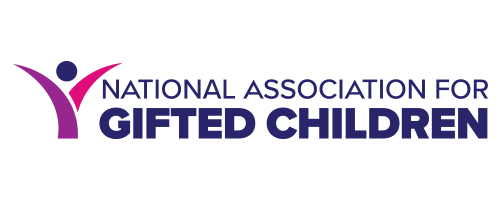Starting the New School Year Strong: What to do when there is no gifted programming available
Parent, Family & Community Network Sip n’ Speak Discussion July 24, 2025
Written by: Jessica LaFollette, Ph.D., PFC Network Chair
Summer is winding down, so naturally kids and parents are beginning to look ahead to the new school year with excitement and a bit of anxiety. Families of gifted and twice-exceptional (2e) children are hopeful that their child’s unique needs will be recognized and nurtured in the new school year. At the PFC network’s recent Sip ‘n’ Speak session, parents gathered virtually on Zoom to share their wishes and concerns for the year ahead and to exchange practical strategies from experiences across the country. The original framing question for our discussion was: What are your hopes and dreams for your child’s next chapter at school?
Parents and teachers joined the call from several different locations and participants began the evening with a review of the programming available (or not) for gifted and twice exceptional learners in the geographic areas represented. As reported by participants and confirmed by research, there are stark disparities between services available for gifted and talented children across the United States (Kettler et al, 2016; NAGC, 2025). Some states’ public schools have full time gifted specialists on campus with a mandate to find and serve every potentially gifted student, while others have no such mandate or even training for teachers to provide differentiation for these learners. After this introductory chat, the remainder of our discussion was centered on the primary concern for parents and educators that evening: What can be done to support bright children when there is no gifted programming available? The answers to this question were discussed at length by participants from varying backgrounds and perspectives. Ultimately, the solutions fell into three categories:
What parents can do:
- Communicate with teachers and administrators.This strategy is ultimately the most effective when communication is positive, two-way, and based on shared goals for the child to grow academically and socially while at school. Participants shared several examples of emails, phone conversations, and parent-teacher meetings where the child’s strengths and needs were clearly articulated so the school staff could offer flexible strategies to meet these needs. Sometimes this was as simple as changing the child’s teacher before the year started so someone experienced with differentiation would be ready to challenge them.
- Explore extracurricular enrichment activities outside of school. Clubs such as chess, robotics, speech & debate, coding, scouting, etc. were popular ways for gifted students to find intellectual peers and stimulate their intellectual growth. Parents also shared that online academic opportunities such as the Center for Talented Youth at Johns Hopkins University were excellent ways to extend learning to a high level.
- Find allies and form a parent group. If one child is not adequately challenged by the content or pacing of the typical curriculum, there is a good chance other bright students may be feeling the same way. Parents can share concerns and strategies over coffee or snacks and work together to advocate for positive change.
What teachers can do:
- Create an enrichment Canvas page or Google Classroom site with approved enrichment activities. Participants found the following resources particularly useful for gifted children experiencing self-directed enrichment learning in the general education setting:
- Choice Boards for Math, ELA and research topics
- Mensa for Kids
- Byrdseed lessons
- Mashup Math
- I-Ready Toolbox
- Math Olympiad problems
- Differentiation Contracts
- Set up enrichment centers. These areas of the classroom can be stocked with books, activities, research materials, and most importantly - intriguing questions for bright children to ponder. When every student has the opportunity to visit these centers if work is completed, they can become a natural reward.
- Curriculum Compacting. This strategy for helping bright children move through required content standards and skills at a faster pace is a research-supported practice requiring minimal training for teachers to implement (Renzulli Center, 2025). The steps include naming the exact content or skill a student needs to master, describing exactly how they will demonstrate mastery, then describing what the child will do instead.
What parents and teachers can do together:
- Set up a learning contract. Participants shared ideas of how these looked at different levels for their children and students. These are similar to curriculum compacting but can be even more general. Some participants shared this work ahead contract example (Van Gemert, 2025). Learning contracts are often written up formally or informally during a parent teacher conference with parents providing ideas for what their child will find the most motivating and teachers sharing what works in their classroom.
- Ask for district support. When parents and teachers agree that the general education classroom is not appropriately meeting a child’s needs, they can approach school and district leadership for broader solutions. This may include training for teachers in differentiation, MTSS leveled enrichment opportunities for students, hiring a school gifted specialist, etc. This solution is ultimately very powerful when multiple parents and teachers are able to bring viable solutions to administrative decision-makers.
- Discuss acceleration. For some gifted and high-achieving students, academic acceleration is the best way to help them find challenges within the general education curriculum. Subject-based acceleration may be a solution for students who are not ready to advance an entire grade level. Acceleration decisions must be made carefully and some tools are available to guide school personnel and parents working together such as the Integrated Acceleration System.
Many parents may feel they are out of luck, when their gifted child attends a school with no official programming or services available. However, the parents and teachers on this call were still hopeful that the coming school year will be a positive one for their gifted children. The resources shared gave everyone ideas to take into the fall for a year full of growth and challenge.
References and Resources:
NAGC Family TIP sheets - free and available to all https://nagc.org/general/custom.asp?page=family_tip_sheets
Parenting for High Potential Archive - available to NAGC members only https://nagc.org/page/Parenting-High-Potential
NAGC Position Paper on Acceleration https://www.nagc.org/acceleration
LEAP Guidebook for Differentiating Instruction for Gifted and High-Potential Students https://www.nagc.org/store/guidebook---differentiating-instruction-for-gifted-and-high-potential-students
Kettler, T., Russell, J., & Puryear, J. S. (2015). Inequitable access to gifted education: Variance in funding and staffing based on locale and contextual school variables. Journal for the Education of the Gifted, 38(2), 99-117.
National Association for Gifted Children. (2025). 2022-23 State of the States in Gifted Education.
https://portal.nagc.org/general/custom.asp?page=state-of-the-states-report
Renzulli Center for Creativity, Gifted Education and Talent Development. (2025). Tips for successful curriculum compacting. https://gifted.uconn.edu/compacting/
Van Gemert, L. (2025) Work ahead contract. https://giftedguru.com/work-ahead-contract/


